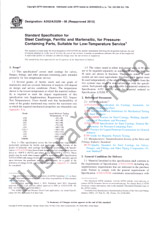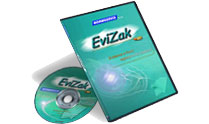Potřebujeme váš souhlas k využití jednotlivých dat, aby se vám mimo jiné mohly ukazovat informace týkající se vašich zájmů. Souhlas udělíte kliknutím na tlačítko „OK“.
ASTM D5487-16
Standard Test Method for Simulated Drop of Loaded Containers by Shock Machines
Přeložit název
NORMA vydána dne 1.11.2016
Informace o normě:
Označení normy: ASTM D5487-16
Poznámka: NEPLATNÁ
Datum vydání normy: 1.11.2016
Kód zboží: NS-667286
Počet stran: 4
Přibližná hmotnost: 12 g (0.03 liber)
Země: Americká technická norma
Kategorie: Technické normy ASTM
Kategorie - podobné normy:
Anotace textu normy ASTM D5487-16 :
Keywords:
critical element, drop test, packaging container, shock, shock machine, velocity ,, ICS Number Code 55.180.10 (General purpose containers)
Doplňující informace
| Significance and Use | ||||||||||||||||||
|
4.1 Shipping containers and the interior packaging materials are used to protect their contents from the hazards encountered in handling, transportation, and storage. Shock is one of the more troublesome of these hazards. Free-fall drop testing, while easy to perform, often understresses the test specimen by subjecting it to drops which are not perpendicular to the dropping surface. Note 1: For example, testing has shown that non-perpendicular
drops, 2° off perpendicularity, result in 8 % lower acceleration
into the test specimen resulting from the impact energy dispersing
in several axes.4.1.1 Controlled shock input by shock
machines provides a convenient method for evaluating the ability of
shipping containers, interior packaging materials, and contents to
withstand shocks. Simulated free-fall drop testing of package
systems, which have critical elements, has produced good results
where the frequency of the shock pulse is at least three times that
of the package system's natural frequency.
4.2 As in most mechanical shock test procedures, fixturing of the package on the shock test machine may have significant influence on the test results. Typically, packages will be firmly held on the table by securing some type of cross member(s) across the top of the package. Care should be taken that any pressure resulting from such fixturing should be minimal, particularly when the container being tested is corrugated or some other similar material. 4.2.1 In cases where low-acceleration, long-duration responses are anticipated, any fixturing can potentially influence packaged item response and can possibly alter any correlation between this test method and free-fall drop testing. Where such correlation is desired, the package can be tested without it being fixed directly to the table. Note that in such circumstances, the shipping container can vigorously rebound from the table and can, if not otherwise controlled, present a safety problem for operators. Fixing the shipping container to the shock machine table is most often recommended for safety and convenience, but accuracy and precision of this test method should not be compromised by such fixturing. Note 2: A rigid package system with a natural frequency above
83 Hz requires a shock pulse shorter than the 2-ms (nominal)
duration currently available with many of today's shock
machines:
Doporučujeme:EviZak - všechny zákony včetně jejich evidence na jednom místě
Poskytování aktuálních informací o legislativních předpisech vyhlášených ve Sbírce zákonů od roku 1945. Poslední aktualizace: 12.12.2025 (Počet položek: 2 249 534) | ||||||||||||||||||




 Cookies
Cookies
